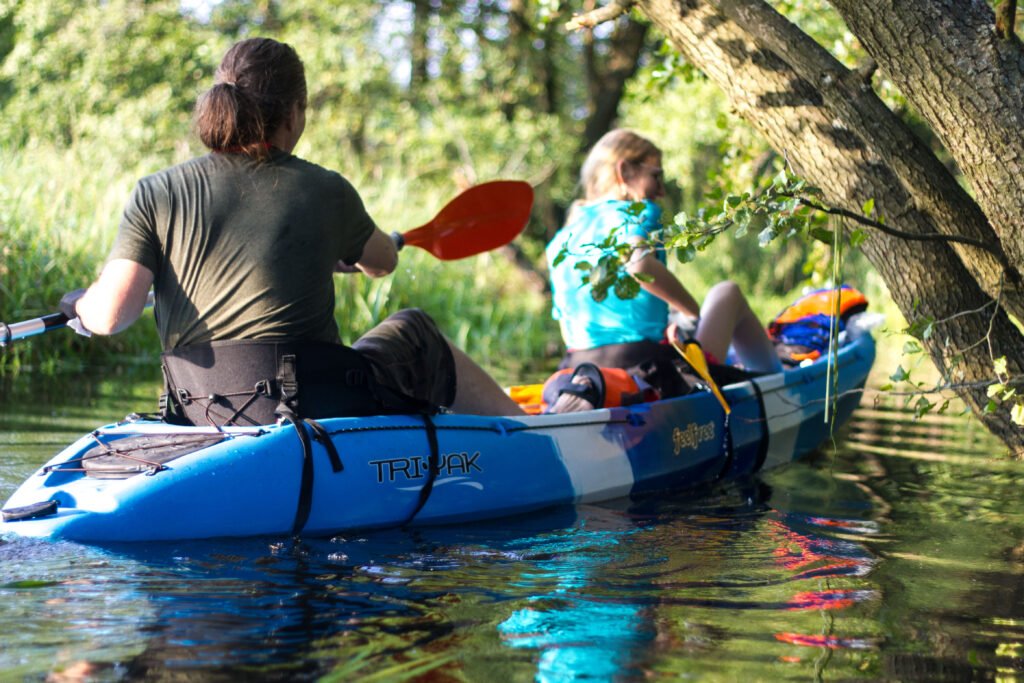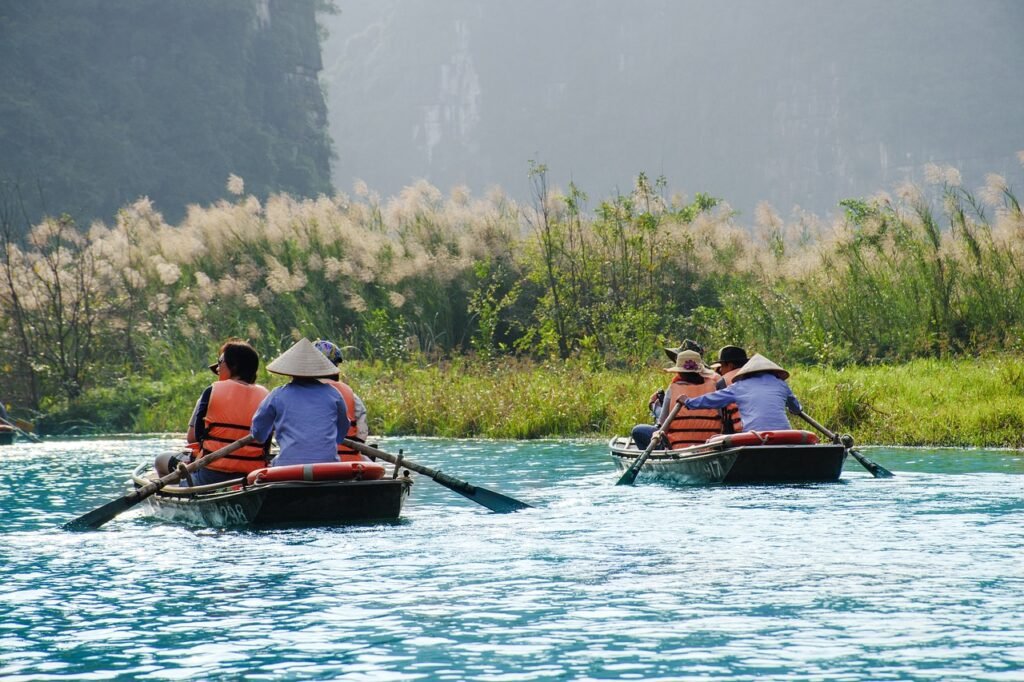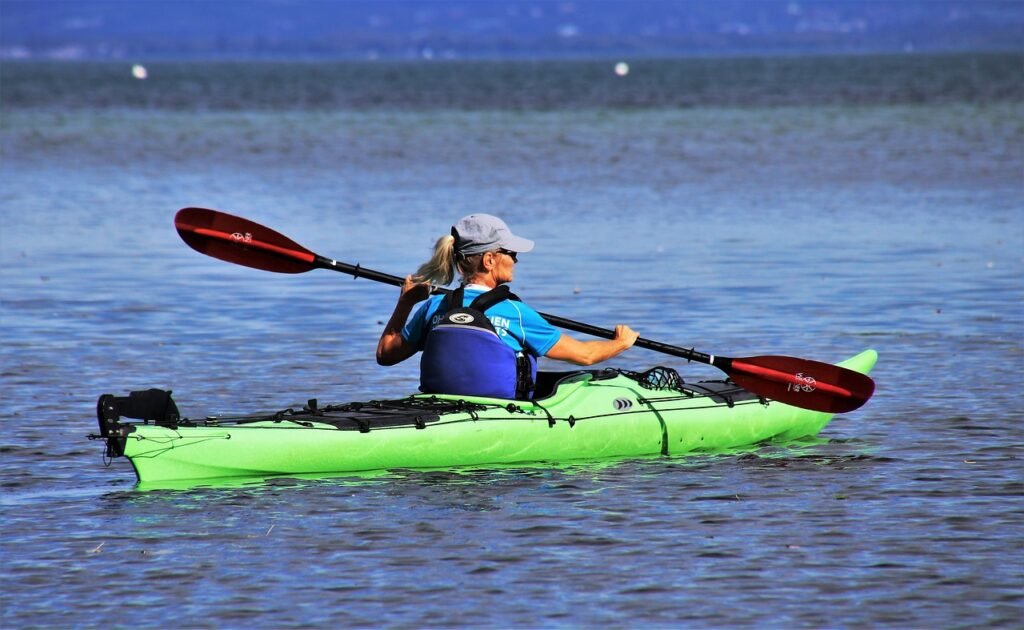Paddling along serene waters in a sit-on-top kayak can be an amazing experience, but it also means getting wet! While some kayakers embrace the splash, others may prefer to stay dry. If you’re part of the latter group, this piece is for you!
Maintaining dryness on a sit-on-top kayak is all about employing clever techniques and investing in the right gear. From wearing appropriate clothing to mastering the art of controlled paddling, there are numerous ways to avoid getting soaked.
Ready for some useful tips? Keep reading as we share practical advice that will change your kayaking game forever. With our help, you’ll soon be enjoying your aquatic adventures without worrying about ending up drenched!

Why is Staying Dry in a Sit-On-Top Kayak Important?
Staying dry while kayaking, particularly on a sit-on-top kayak, is crucial for multiple reasons. It enhances your comfort during the activity and helps prevent potential health risks such as hypothermia. Moreover, it contributes to maintaining the balance and thus increases safety while you are paddling.
The Comfort Factor
When you stay dry in a sit-on-top kayak, your comfort level significantly improves. Paddling in wet clothes can lead to discomfort and distractions that may affect your overall kayaking experience. Therefore, ensuring you remain dry throughout your journey is key to enjoying this water sport to its fullest.
Health Considerations
Hypothermia is a real risk when kayaking, especially in colder waters or weather conditions. Wet clothing can accelerate the onset of hypothermia by drawing heat away from your body more quickly than if you were dry. Hence, staying dry becomes an important aspect not only for comfort but also for health precautions.
Maintaining Balance and Safety
Balance plays an integral role when it comes to sit-on-top kayaking. Being wet can make it harder for you to maintain grip on the seat or handles which could result in tipping over or losing control of the kayak.
Let’s dig deeper into these aspects:
- Comfort: Wet clothes tend to stick onto our bodies causing annoyance and discomfort which might distract us from fully engaging with the activity.
- Health Risks: Cold water lowers body temperature faster than air does at similar temperatures; hence hypothermia could set in quicker if one remains wet.
- Safety: Water makes surfaces slippery; therefore being wet could cause instability leading potentially dangerous situations.
What are the Key Factors That Contribute to Getting Wet While Kayaking?

Getting wet while kayaking is almost inevitable. The main factors contributing to this are environmental conditions, the type of kayak you’re using, your paddling technique, and even the clothes you wear. These elements combined can make a significant difference in how much water gets into your kayak and onto you.
Environmental Conditions
The environment plays a crucial role in determining whether or not you’ll get wet while kayaking. Waves splashing over the sides of your kayak is often unavoidable when you’re out on open water with strong winds or currents. Similarly, rainfall can also contribute to getting soaked during a kayaking trip.
Type of Kayak
The design and type of your kayak significantly influence how dry or wet you stay during kayaking sessions. For example, sit-on-top models tend to be more exposed compared to their sit-in counterparts which offer better protection against water ingress.
Paddling Technique
Your paddling technique might cause unnecessary splashes that lead to getting wet too. Improper strokes can result in excess water being scooped up by the paddle and thrown towards yourself.
Clothing Choices
Lastly, what you wear for kayaking matters as well. Waterproof clothing like a dry suit or splash top could help keep most of the water off from directly contacting with your body.
How Can Proper Clothing Choices Help You Stay Dry in a Sit-On-Top Kayak?

Opt for Quick-Dry Materials
Quick-dry materials are your best friend when kayaking. Fabrics such as nylon or polyester wick away moisture from your skin, allowing it to evaporate quickly. Unlike cotton, these materials do not retain water, which means even if you get splashed, you won’t stay wet for long.
Layer Your Clothing
Layering is another effective strategy to stay dry while kayaking. Start with a base layer that wicks moisture away from your body (think synthetic fabrics). Over this, wear an insulating layer like fleece to keep warm. Finally, top everything off with a waterproof outer layer to protect against splashes and rain.
Invest in Waterproof Outerwear
Waterproof jackets and pants are essential items for any serious kayaker. They provide an additional barrier between you and the water while allowing sweat vapor to escape from inside. Consider garments with sealed seams for maximum protection.
The Role of Paddle Drip Rings
Paddle drip rings play a crucial role in keeping your hands and lap dry during paddling sessions as they prevent water running down the paddle shaft onto your clothes.
Which Techniques Can Minimize Water Entry into Your Sit-On-Top Kayak?
Water entry can be a nuisance when enjoying a peaceful kayak ride. However, there are several techniques that can help you keep your sit-on-top kayak dry and ensure a comfortable journey. Let’s dig deeper into these strategies.
Proper Paddling Technique
The most common way water enters the kayak is through improper paddling. An efficient stroke technique minimizes splashes and keeps water out. A low-angle paddle stroke, where the paddle remains relatively horizontal, is ideal for reducing splashes.
Use of Scupper Plugs
Scupper plugs are specifically designed to prevent water from entering your kayak through the scupper holes – draining points on a sit-on-top kayak. Installing these plugs effectively reduces any unwanted water entry.
Kayak Skirts
Another solution could be investing in a good quality spray skirt or deck cover. These accessories act as barriers against waves and wind-driven water droplets by fitting snugly around you and over the cockpit of your sit-on-top kayak.
Dress Appropriately
Wearing appropriate clothing can also contribute to minimizing water entry into your sit-on-top kayak. Waterproof clothes will not only keep you dry but also reduce the amount of water that gets inside the boat.
The following aspects may help you further:
- Maintain balance: Avoid leaning too much on one side or making sudden moves which could let more water in.
- Avoid choppy waters: If possible, stick to calm waters especially if you’re still learning how to control splashing while paddling.
- Routinely check for damage: Regularly inspecting your kayak for any cracks or damages will help prevent water from seeping in.
What Equipment and Accessories are Essential for Keeping Dry in a Sit-On-Top Kayak?
If you’re planning a kayaking adventure, staying dry is crucial. With the right equipment and accessories, it’s entirely possible to enjoy your sit-on-top kayak ride without getting soaked. Let’s dig deeper into what these essentials are to ensure you have a comfortable journey.
Spray Skirts
A spray skirt is an essential piece of equipment that prevents water from entering the cockpit of your kayak. It fits around your waist and extends over the opening of the kayak, creating a seal against water splashes.
Dry Bags
Dry bags are waterproof containers used to protect your belongings from getting wet while kayaking. They come in various sizes and designs, perfect for storing items like clothing, food, cameras, or cell phones.
Waterproof Clothing
Investing in good quality waterproof clothing can make all the difference on a kayaking trip. Waterproof jackets, pants or waders will keep you dry during your outing.
Kayak Bilge Pump
A bilge pump helps remove excess water that may accumulate inside the kayak due to weather conditions or water splash. This handy tool ensures that even after some heavy paddling or unexpected waves; you remain comfortably dry inside your boat.
FAQs
What clothing is recommended for kayaking to stay dry?
Wearing a dry suit or semi-dry suit is advisable when kayaking, as they are designed to keep you dry even if you capsize. Additionally, wear waterproof gloves and boots for added protection.
How can I prevent water from entering the kayak?
Use scupper plugs in the holes of your sit-on-top kayak. They are designed to stop water from splashing into the boat.
Are spray skirts helpful in keeping dry while on a sit-on-top kayak?
Spray skirts aren’t typically used with sit-on-top kayaks because they don’t have cockpit like traditional kayaks do. Instead, consider using a paddle drip ring to prevent water dripping off your oars onto your lap.
Is there any specific paddling technique that helps to stay dry?
Yes, using high angle paddling where the paddle is more vertical helps reduce the amount of water that drips onto you. Also, make sure not to submerge the paddle too deep into the water.
